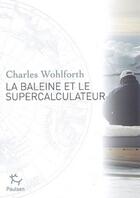-
Nombre de pages : (-)
-
Collection :
(-)
-
Genre :
(-)
-
Thème :
Non attribué
-
Prix littéraire(s) :
(-)
Résumé:
In The Whale and the Supercomputer, scientists and natives wrestle with our changing climate in the land where it has hit first--and hardestA traditional Eskimo whale-hunting party races to shore near Barrow, Alaska--their comrades trapped on a floe drifting out to sea--as ice that should be... Voir plus
In The Whale and the Supercomputer, scientists and natives wrestle with our changing climate in the land where it has hit first--and hardestA traditional Eskimo whale-hunting party races to shore near Barrow, Alaska--their comrades trapped on a floe drifting out to sea--as ice that should be solid this time of year gives way. Elsewhere, a team of scientists transverses the tundra, sleeping in tents, surviving on frozen chocolate, and measuring the snow every ten kilometers in a quest to understand the effects of albedo, the snow's reflective ability to cool the earth beneath it. Climate change isn't an abstraction in the far North. It is a reality that has already dramatically altered daily life, especially that of the native peoples who still live largely off the land and sea. Because nature shows her footprints so plainly here, the region is also a lure for scientists intent on comprehending the complexities of climate change. In this gripping account, Charles Wohlforth follows the two groups as they navigate a radically shifting landscape. The scientists attempt to decipher its smallest elements and to derive from them a set of abstract laws and models. The natives draw on uncannily accurate traditional knowledge, borne of long experience living close to the land. Even as they see the same things-a Native elder watches weather coming through too fast to predict; a climatologist notes an increased frequency of cyclonic systems-the two cultures struggle to reconcile their vastly different ways of comprehending the environment. With grace, clarity, and a sense of adventure, Wohlforth--a lifelong Alaskan--illuminates both ways of seeing a world in flux, and in the process, helps us to navigate a way forward as climate change reaches us all.
Donner votre avis















